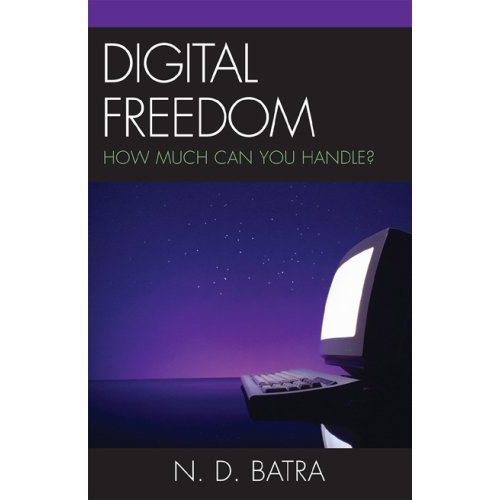How much information can you stand?
ND Batra
From The Statesman
Ceaseless information pollutes our minds. There was a time when production, distribution and processing of information, news and movies existed in a state of balance. We consumed and assimilated what was produced. And then there was time for silence, for conversation, and for playfulness.
But that was before computers, microwave and satellite transmission created a deluge that seems to sweep away everything else from our lives. Some of us, especially of the older generation, raised on the logic of linear thinking and writing, can’t handle what we see as an information tsunami. Others, especially of the digital generation, growing up on computer games, cell phones, instant messaging, kids born to multitasking, revel on this new culture of incessant messaging. The digital generation has not been complaining that there is too much information swirling around, albeit most of it is useless.
David Schenk called it “data smog.” Due to a ceaseless development of computer technology, information and data production has become so abundant that it clutters our minds as “a pollutant.” We produce too much information for our own good, and so fast that we our minds can’t assimilate it, he said. Of course what is a pollutant could become raw material for something new in the future, only if know what to do with it. In other words we don’t have the requisite software to turn pollutants into useful products.
According to Schenk, the phenomenon of accelerated production of data collection and information production is of recent origin, only a half century. “For nearly 100,000 years leading up to this century, information technology has been an unambiguous virtue as a means of sustaining and developing culture…Then, around the time of the first atom bomb, something strange happened. We began to produce information much faster than we could process it.” There’s no denying the fact that dropping of atom bombs over Hiroshima and Nagasaki created information explosion that could not have been handled by traditional means of information processing especially in a manner that would have created knowledge and understanding of what man could do to his fellow beings.
There were technology nay-sayers, Luddites, of the 19th century, who out of fear of loss of jobs and their traditional life styles, destroyed machinery rather than adopting and accepting it. Schenk is no Luddite but he laments, “We have quite suddenly mutated into a radical different culture, a civilization that trades in and survives on stylized communication…. The blank spaces and silent moments in life are fast disappearing. Mostly because we have asked for it, media are everywhere. Television, telephones, radios, message beepers, and an assortment of other modern communication and navigational aids are now as ubiquitous as roads and tennis shoes—anywhere humans can go, all forms of media now follow: onto trains, planes, automobiles, into hotel bathrooms, along jogging paths and mountain trails, on bikes and boats...”
The ecology of information has become overwhelming. A few seasons ago, the television sitcom “Hope and Faith” introduced a two-part episode about wife exchange, which in spite of its suggestive open marriage immorality wasn’t as naughty as it sounds. In fact “Wife Swap” is a popular reality show, where two housewives in culturally different states exchange households with children but without swapping beds, just to see how the other half of womankind lives. In a parody of the reality show, in the “Hope and Faith” episode of wife exchange, Hope left her home in Columbus, Ohio, and moved to live with a family in Manhattan, where she found that the high-tech New York family members had all the digital gadgets but they seldom talked with each other as a family.
The culprit was the work-alcoholic father, Aaron, who in a delightful mockery of “always on, always available,” was always talking to someone on his hand-free cell phone. When he looked at his Hope, his wife in exchange, at the dining table, she thought he was talking with her, but of course, no, he was talking past her, with someone else on the other side, a customer. The Manhattan man symbolised the multitasking New Yorker, always in communication, always networking, always connected, except when it came to touching someone emotionally and keeping relations on a steady keel.
The Manhattan wife-swapping cell-addicted man episode ended with Aaron deciding to give up his always-on wireless communication gear, sell his multimillion-dollar apartment and return to his family’s bosom and turn to simpler things. Ah! But that could only happen in television. Nevertheless, we have to consider the possibility that confronted with an ever rising tide of information, the human mind might evolve and adapt and learn to improve the signal-to-noise ratio; that’s, new technology might help us to see patterns in what is called noise and clutter.
History of human evolution has been a struggle to transform nothingness to zero to information, from empty cave walls to primitive carvings and murals, from rags and papyrus to manuscript writing, from zero-and-one sheep counting to decimal system to bits and bytes. I am optimistic that tools that enable us to create information would also help us to find patterns and meanings in that information, whether it is about terrorism or about the global marketplace.
Tuesday, September 12, 2006
Born to multitasking
at Tuesday, September 12, 2006 Posted by Narain D. Batra
Subscribe to:
Post Comments (Atom)

No comments:
Post a Comment